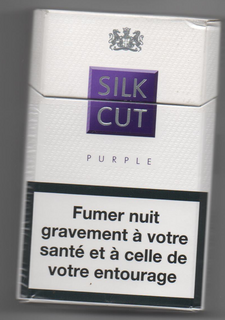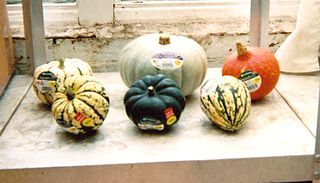
Advertising is a marketing communication that employs an openly sponsored, non-personal message to promote or sell a product, service or idea. Sponsors of advertising are typically businesses wishing to promote their products or services. Advertising is differentiated from public relations in that an advertiser pays for and has control over the message. It differs from personal selling in that the message is non-personal, i.e., not directed to a particular individual. Advertising is communicated through various mass media, including traditional media such as newspapers, magazines, television, radio, outdoor advertising or direct mail; and new media such as search results, blogs, social media, websites or text messages. The actual presentation of the message in a medium is referred to as an advertisement, or "ad" or advert for short.

In promotion and of advertising, a testimonial or show consists of a person's written or spoken statement extolling the virtue of a product. The term "testimonial" most commonly applies to the sales-pitches attributed to ordinary citizens, whereas the word "endorsement" usually applies to pitches by celebrities. Testimonials can be part of communal marketing. Sometimes, the cartoon character can be a testimonial in a commercial.
The unique selling proposition (USP) or unique selling point is a marketing concept first proposed as a theory to explain a pattern in successful advertising campaigns of the early 1940s. The USP states that such campaigns made unique propositions to customers that convinced them to switch brands. The term was developed by television advertising pioneer Rosser Reeves of Ted Bates & Company. Theodore Levitt, a professor at Harvard Business School, suggested that, "Differentiation is one of the most important strategic and tactical activities in which companies must constantly engage." The term has been used to describe one's "personal brand" in the marketplace. Today, the term is used in other fields or just casually to refer to any aspect of an object that differentiates it from similar objects.

Consumer behaviour is the study of individuals, groups, or organizations and all the activities associated with the purchase, use and disposal of goods and services, including the consumer's emotional, mental and behavioural responses that precede or follow these activities. Consumer behaviour emerged in the 1940s and 50s as a distinct sub-discipline in the marketing area.
Rosser Reeves was an American advertising executive and pioneer of television advertising; Reeves generated millions for his clients. The Ted Bates agency, where he rose to chairman, exists today as Bates CHI & Partners.
The buying decision process is the decision-making process used by consumers regarding the market transactions before, during, and after the purchase of a good or service. It can be seen as a particular form of a cost–benefit analysis in the presence of multiple alternatives.

Silk Cut is a British brand of cigarettes, currently owned and manufactured by Gallaher Group, a division of Japan Tobacco. The packaging is characterised by a distinctive stark white packet with the brand name in a purple, blue, red, silver, white or green square.
Marketing ethics is an area of applied ethics which deals with the moral principles behind the operation and regulation of marketing. Some areas of marketing ethics overlap with media ethics.

Food marketing brings together the food producer and the consumer through a chain of marketing activities.
Digital marketing is the marketing of products or services using digital technologies, mainly on the Internet, but also including mobile phones, display advertising,and any other digital medium. Digital marketing channels are systems based on the internet that can create, accelerate, and transmit product value from producer to the terminal consumer by digital networks.
Youth Marketing is a term used in the marketing and advertising industry to describe activities to communicate with young people, typically in the age range of 13 to 35. More specifically, there is the teen marketing, targeting people age 13 to 17, college marketing, targeting college-age consumers, typically ages 18 to 24, young adult marketing, targeting youngsters use professionals, typically ages 25 to 34.
In advertising, a hard sell is an advertisement or campaign that uses a more direct, forceful, and overt sales message. This approach is the diametric counterpart of a soft sell.
Reverse marketing is the concept of marketing in which the customer seeks the firm rather than marketers seeking the customer. Usually, this is done through traditional means of advertising, such as television advertisements, print magazine advertisements and online media. While traditional marketing mainly deals with the seller finding the right set of customers and targeting them, reverse marketing focuses on the customer approaching potential sellers who may be able to offer product.

Targeted advertising is a form of online advertising that is directed towards audiences with certain traits, based on the product or person the advertiser is promoting. These traits can either be demographic which are focused on race, economic status, sex, age, the level of education, income level and employment or they can be psychographic focused which are based on the consumer's values, personality, attitudes, opinions, lifestyles and interests. They can also be behavioral variables, such as browser history, purchase history, and other recent activity. Targeted advertising is focused on certain traits and the consumers who are likely to have a strong preference will receive the message instead of those who have no interest and whose preferences do not match a product's attribute. This eliminates wastage.
Consumer neuroscience is the combination of consumer research with modern neuroscience. The goal of the field is to find neural explanations for consumer behaviors in individuals both with or without disease.
Brand language is the body of words, phrases, and terms that an organization uses to describe its purpose or in reference to its products. Brand language is used in marketing to help consumers connect specific words or ideas to specific companies or products. When developing a brand language, word choice and tone are the two fundamental components. Word choice is the vocabulary that is used in the marketing or advertising, while tone refers to the attitude of the advertisement. Tone is not limited to language, it can also be incorporated through visual elements as well as delivery.
Word-of-mouth marketing, also called word of mouth advertising, differs from naturally occurring word of mouth, in that it is actively influenced or encouraged by organizations. While it is difficult to truly control WOM, research has shown that there are three generic avenues to 'manage' WOM for the purpose of WOMM: 1.) Build a strong WOM foundation, 2.) Indirect WOMM management which implies that managers only have a moderate amount of control, 3.) Direct WOMM management, which has higher levels of control. Proconsumer WOM has been suggested as a counterweight to commercially motivated word of mouth.










